41 daily values on food labels
The Value of Daily Values - Real Food Blends Daily Reference Values (DRVs): these are established for fat, saturated fat, cholesterol, carbohydrates, protein, dietary fiber, sodium, and potassium RDIs typically represent the recommended nutrients of the group with the highest need. For example, the RDI for vitamin D is 20 mcg, which is the RDA for adults over the age of 70. Percent daily value - Canada.ca dividing the amount of a nutrient in a serving size by its daily value, then multiplying that number by 100 For example, a food product has 3 mg of iron. The daily value for iron is 14 mg. This means that the % DV for iron would be 21%. If you would like to do your own calculation, use the equation below to help you. (3 mg ÷ 14 mg) × 100 = 21% DV
Percent Daily Value On Food Label - LabelCal What are Percent Daily Values on Food Labels? Percent daily values represent the percentage of the recommended daily intake a single serving of food contains. For instance, if the percent daily value for saturated fat is 45%, that means you are getting almost half of the saturated fat that the FDA recommends you consume in one day.

Daily values on food labels
Food Labels | CDC - Centers for Disease Control and Prevention In general, eat more foods that are higher in vitamins, minerals (such as calcium and iron), and fiber. Eat fewer foods that are higher in added sugars, saturated fat, and sodium (salt), and avoid trans fat. Keep in mind that the % Daily Value of each nutrient, such as total fat of 10% in the example below, is based on eating 2,000 calories a day. Daily Values (DVs) - National Institutes of Health DVs were developed by the U.S. Food and Drug Administration (FDA) to help consumers determine the level of various nutrients in a standard serving of food in relation to their approximate requirement for it. The label actually provides the %DV so that you can see how much (what percentage) a serving of the product contributes to reaching the DV. The Lows and Highs of Percent Daily Value on the Label The percent Daily Value (%DV) shows how much a nutrient in a serving of food contributes to a total daily diet. The %DV can help you determine if a serving of food is high or low in a...
Daily values on food labels. Nutrition Labelling – Table of Daily Values - Canada.ca Oct 20, 2022 · Daily Value; Column 2 Column 3 Column 4; Nutrient Food intended solely for infants six months of age or older but less than one year of age Food intended for infants six months of age or older but less than one year of age or children one year of age or older but less than four years of age Any other case; 1. Potassium: 860 mg: 2000 mg: 3400 mg ... Table of Daily Values - Canada.ca This document is a two-part table that sets out the recommended amounts of nutrients (the daily value) for specific age groups. These are the reference points upon which the % daily value in the nutrition facts table are based. Part 1 of the table sets out the daily values for macronutrients and sodium for two age groups. Dietary Reference Intake - Wikipedia The DRI values differ from those used in nutrition labeling on food and dietary supplement products in the U.S. and Canada, which uses Reference Daily Intakes (RDIs) and Daily Values (%DV) which were based on outdated RDAs from 1968 but were updated as of 2016. What are the daily values on food labels based on? - Short-Facts What are the daily values on food labels based on? The Daily Values are reference amounts (expressed in grams, milligrams, or micrograms) of nutrients to consume or not to exceed each day. The %DV shows how much a nutrient in a serving of a food contributes to a total daily diet. The %DV helps you determine if a serving of food is high or low ...
The Vegetarian Resource Group Blog - VRG Daily values are amounts of nutrients that people are recommended to consume or not to exceed each day. The Daily Value may be somewhat different from the amount of a nutrient you need. For example, the RDA for calcium for adults ranges from 1,000 milligrams for younger adults to 1,300 milligrams for pregnant and lactating women. Daily Value on the New Nutrition and Supplement Facts Labels Feb 25, 2022 · The Nutrition and Supplement Facts labels on packaged foods and dietary supplements have ... For a complete list of the Daily Values for all ... That means that a packaged food with 1,060mg of ... FDA Daily Nutritional Requirements to Help You Eat Right Mar 20, 2019 · Understanding the nutrition content of foods can be confusing, as there are many different labels. Fortunately, the Food and Drug Administration has created daily nutritional requirements called daily values. Daily values are an easy way to figure out if you're obtaining sufficient micronutrients and macronutrients in your daily diet. Dietary Supplement Labeling Guide: Chapter IV. Nutrition ... The % DV must be declared for all dietary ingredients for which FDA has established Daily Values, except that 1) the percent for protein may be omitted, and 2) on the labels of dietary supplements ...
How you can Calculate % of Daily Value on Food Labels How to Calculate % of Daily Value on Food Labels. Step 1. Find the nutrient amount on the food label. Step 2. Look up the total daily recommended amount in the USDA Dietary Guidelines. Step 3. Divide the nutrient amount by the total daily recommended value. Step 4. Daily Intake - Information within the Nutrition Facts table - Food ... Daily Value and % Daily Value. The Daily Value (DV) is the reference point upon which the % Daily Value is based. The Daily Values are also used to set criteria for the nutrient content claims for vitamins and mineral nutrients. The Daily Value is the quantity applicable to a nutrient according to the Table of Daily Values [B.01.001(1), B.01. ... FDA Rounding Rules for Your Food Label - LabelCalc A Guide to Using FDA Rounding Rules for Your Food Label. Online nutrition analysis software makes easy work of the FDA's complex rounding rules. Image source: Unsplash user Volkan Olmez. ... "less than 2% of the Daily Value for X nutrient." Use an asterisk to denote this underneath and place the statement in the footnote section of the ... Nutrition Facts table formats - Food labels - Canadian Food ... The aggregate format – different amounts of food provides complete nutrition information (that is, in both absolute values and % Daily Values) for all amounts of food, whereas the dual format – different amounts of food only provides absolute values for the first amount of food.
The % daily values found on a food label are based on A. a 2,000 ... The % daily values found on a food label are based on A. a 2,000-calorie diet. B. the time of year. C. whether the person is a man or woman. D. whether the food is all-natural or processed.
How to Understand and Use the Nutrition Facts Label | FDA - U.S. Food ... The Daily Values are reference amounts (expressed in grams, milligrams, or micrograms) of nutrients to consume or not to exceed each day. The %DV shows how much a nutrient in a serving of a...
Understanding Labels - 4. The Percent Daily Value (%DV) (#4 on sample ... 4. The Percent Daily Value (%DV) (#4 on sample label) The % Daily Value (%DV) is the percentage of the Daily Value for each nutrient in a serving of the food. The Daily Values are reference amounts (expressed in grams, milligrams, or micrograms) of nutrients to consume or not to exceed each day. The %DV shows how much a nutrient in a serving of ...
Learn About Daily Values On Food Labels | Chegg.com Vitamins - There are different daily values for various vitamins. The major ones are mentioned below: Vitamin C - 75 mg (milligrams) Vitamin D - 5 micrograms Vitamin E - 10 mg Vitamin K - 80 micrograms Vitamin A - 600 micrograms Vitamin B complex - 400 micrograms Minerals - Different minerals have different daily values as well.
Daily Values for Food Labels | Download Table After 3 hour-storage, the pH value was determined at 5.63, then decrease to 5.56 and 5.55 after 24 and 48 hours, respectively. The color values (L* , a* , and b* ) were in the normal range ...
Food Label Flashcards | Quizlet required for both current label and propsed new label. -the footnote for %DV shows how reccommendations differ between 2000 kcal diet and a 2500 kcal diet. -daily values can show consumers that a product is high or low in a particular nutrient. the following are correct regarding percent daily value (%DV) on a food label. nutrient content claims.
Food Labels: Fat & Cholesterol | Home & Garden Information Center When comparing food labels, combine the grams (g) of saturated fat and trans fat, then choose the food with the lower combined amount. Look for the lowest % Daily Value for cholesterol, also. Ingredients List: When a food is made with more than one ingredient, an ingredients list is required on the label. Ingredients are listed in order by ...
What Does "% Daily Value" Mean on a Food or Supplement Label? Generally, the Daily Values chosen for nutrient labels are based on a 2,000-calorie diet for healthy adults — except for when they aren't. Sometimes — particularly when it comes to critical nutrients — they reflect the needs of a population sub-group that requires more. For example, the RDA for iron is 8 mg for men and 18 mg for women.
Daily Value: Definition and How to Calculate It - Insider Found on the nutrition label, the daily value system tells you can help you determine if a product is high or low in particular nutrients. What does daily value mean? Daily value (DV) refers to how much of a nutrient you should consume each day based on a 2,000 calorie diet. You can find daily values for a range of nutrients on the FDA's website.
How to Calculate % of Daily Value on Food Labels | livestrong Percent of daily value is included for many nutrients but not all. Video of the Day Step 1 Find the nutrient amount on the food label. Step 2 Look up the total daily recommended amount in the USDA Dietary Guidelines. Step 3 Divide the nutrient amount by the total daily recommended value. Step 4 Multiply by 100. Things You'll Need
Label: Front of pack labels > Using the front of pack label - Food label Guideline Daily Amounts. The information on this page is historical. Food labels are changing and the term Guideline Daily Amount is being replaced by Reference Intake (RI). Read about the new nutrition labelling requirements. GDAs help make sense of nutrition information provided on food labels. They translate science into consumer friendly ...
Added Sugars on the New Nutrition Facts Label | FDA Feb 25, 2022 · The Daily Value for added sugars is 50 grams per day based on a 2,000 calorie daily diet. ... The U.S. Food and Drug Administration (FDA) is including added sugars on the Nutrition Facts label so ...
Solved Daily Values on food labels are based on a | Chegg.com table 2-8 daily values for food labels food labels must present the "% daily value for those nutrients nutrient original daily values updated daily values fat total 790 65 20 g saturated fat 20 g cholesterol 300 ma 300 mg sodium 2400 mg 2300 mg carbohydrate (total 300 g 2750 fiber 250 2001 g protein 500 500 100 added sugars vitamin d calcium 10 p …
How To Read Food and Beverage Labels - National Institute on Aging The percent Daily Value (% DV) tells how much a nutrient in a serving of the food or beverage contributes to a total daily 2,000-calorie diet. Although the average person needs 2,000 calories a day to maintain their weight, individuals may need more or fewer depending on their lifestyle.
The Lows and Highs of Percent Daily Value on the Label The percent Daily Value (%DV) shows how much a nutrient in a serving of food contributes to a total daily diet. The %DV can help you determine if a serving of food is high or low in a...
Daily Values (DVs) - National Institutes of Health DVs were developed by the U.S. Food and Drug Administration (FDA) to help consumers determine the level of various nutrients in a standard serving of food in relation to their approximate requirement for it. The label actually provides the %DV so that you can see how much (what percentage) a serving of the product contributes to reaching the DV.
Food Labels | CDC - Centers for Disease Control and Prevention In general, eat more foods that are higher in vitamins, minerals (such as calcium and iron), and fiber. Eat fewer foods that are higher in added sugars, saturated fat, and sodium (salt), and avoid trans fat. Keep in mind that the % Daily Value of each nutrient, such as total fat of 10% in the example below, is based on eating 2,000 calories a day.

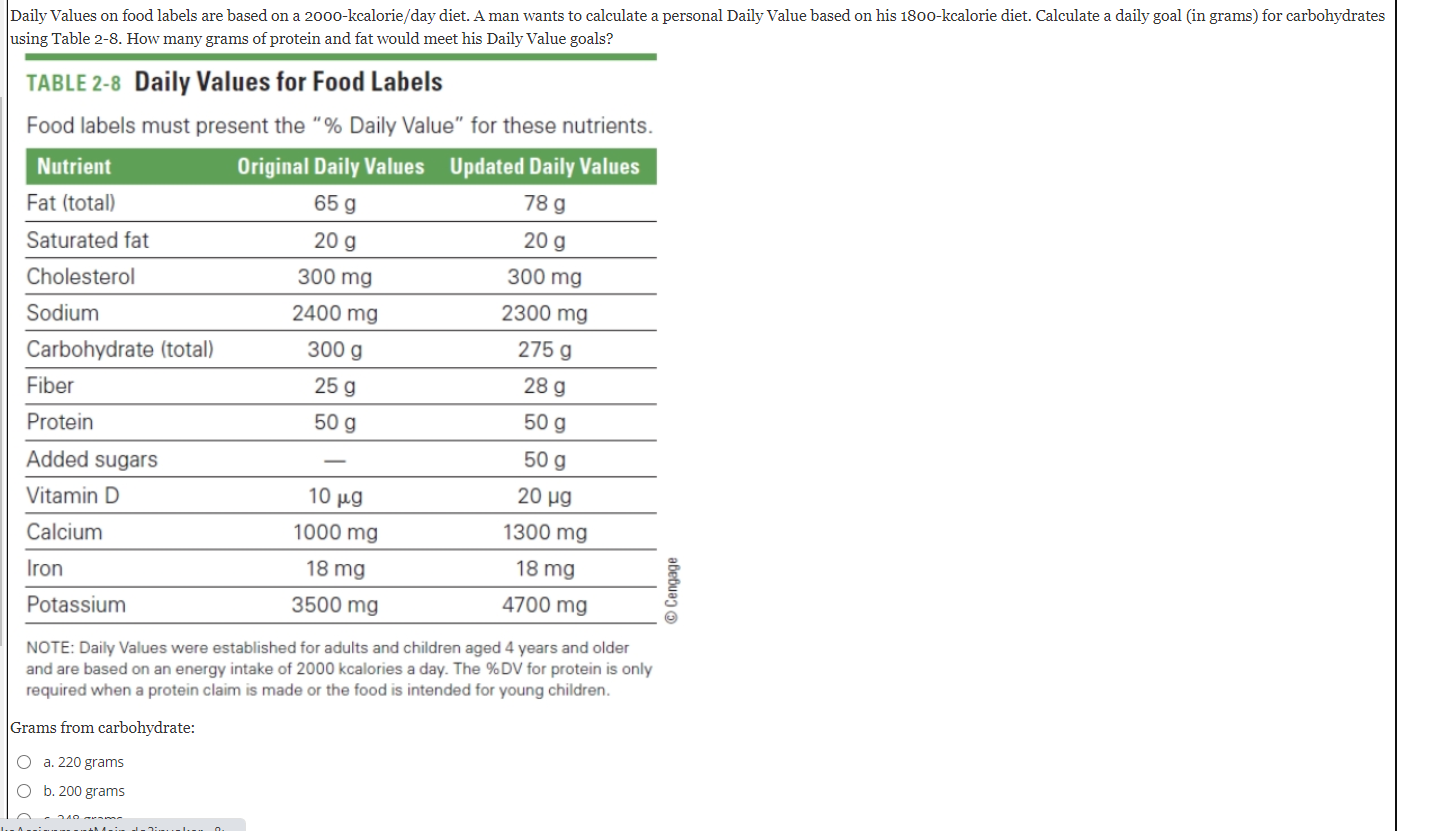
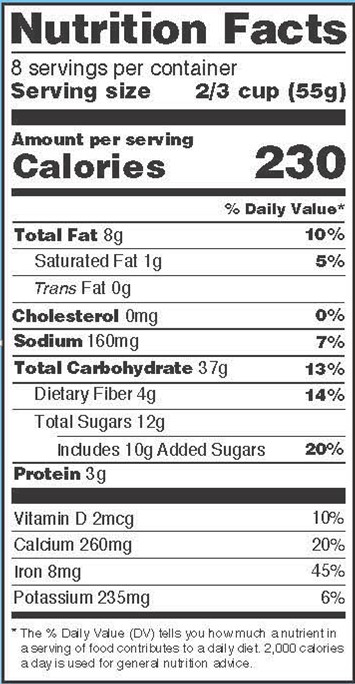
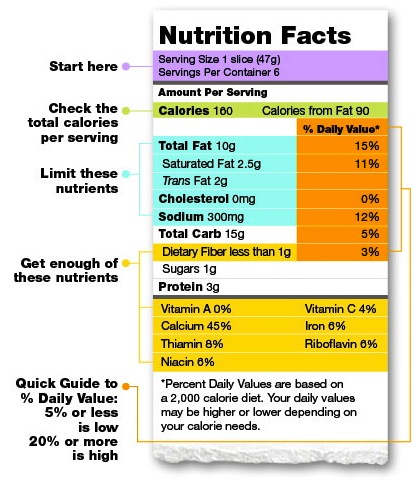

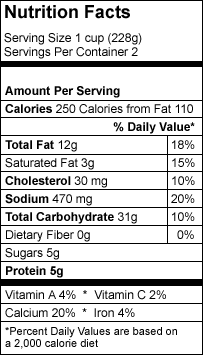

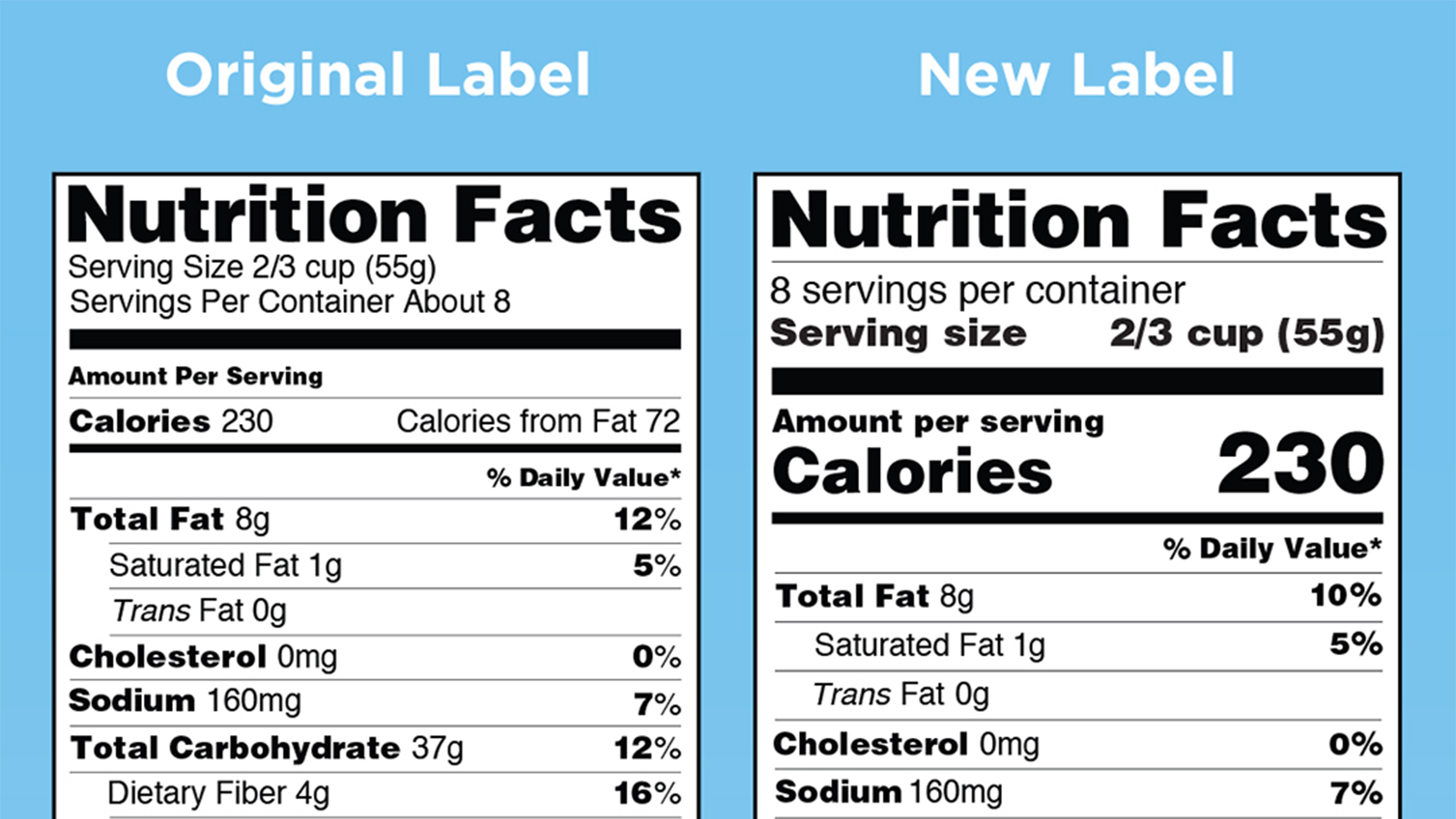

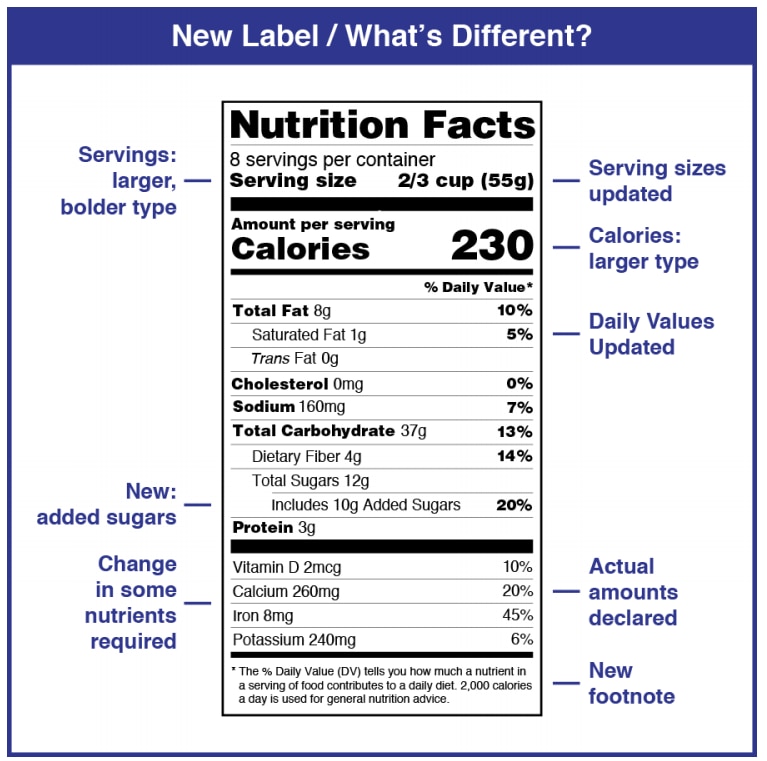


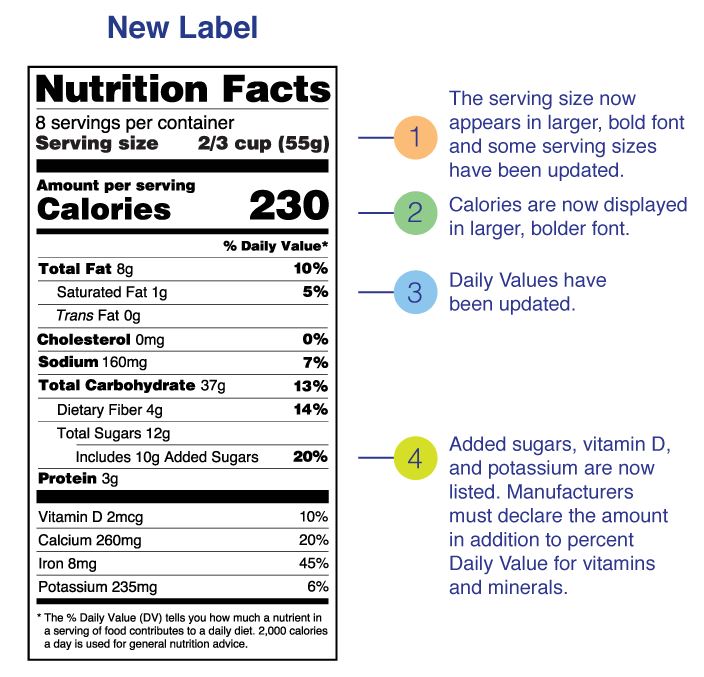

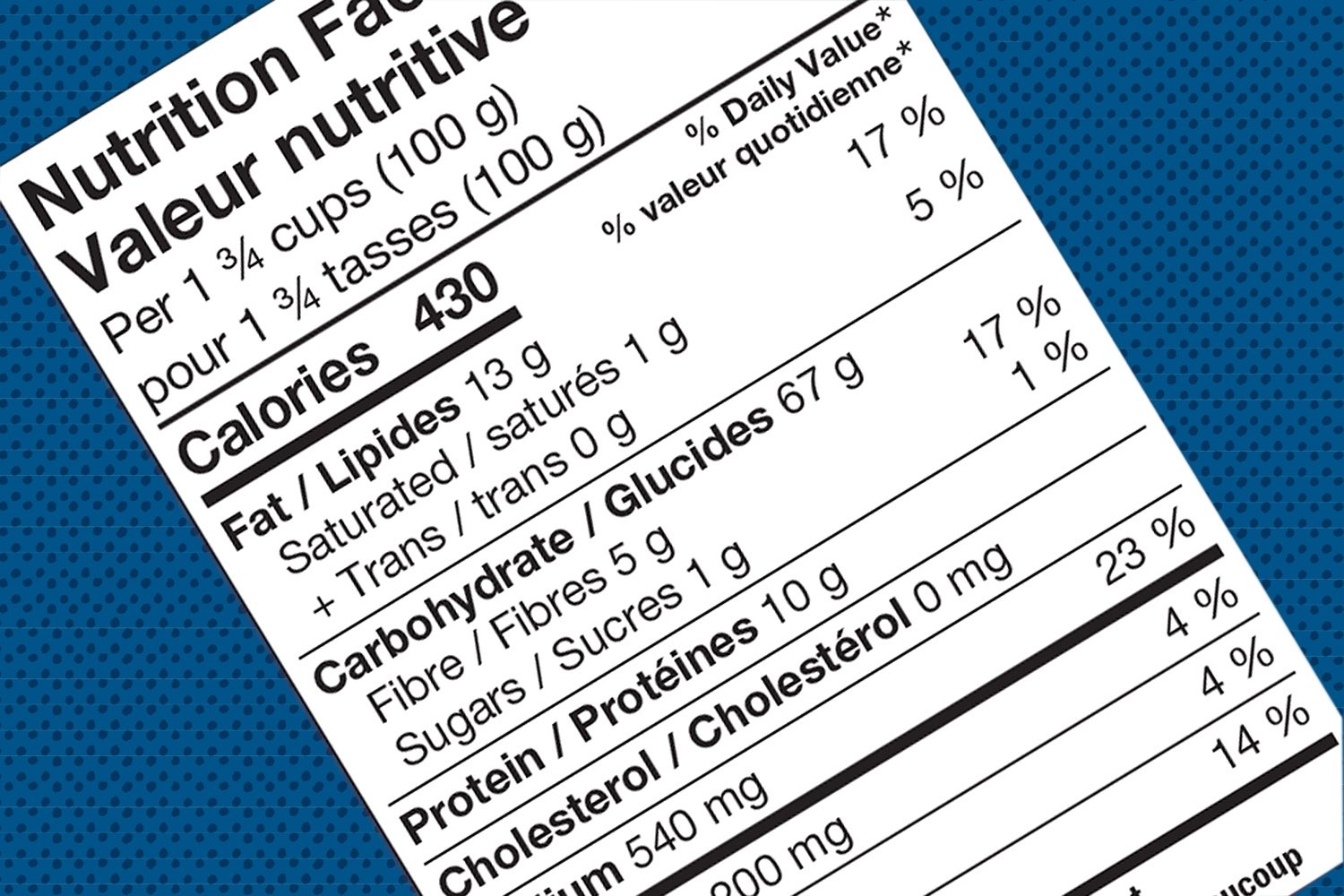
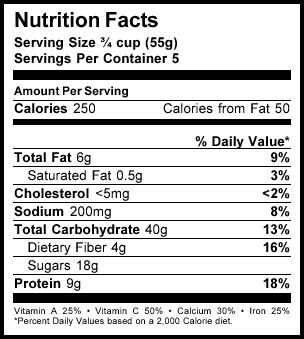

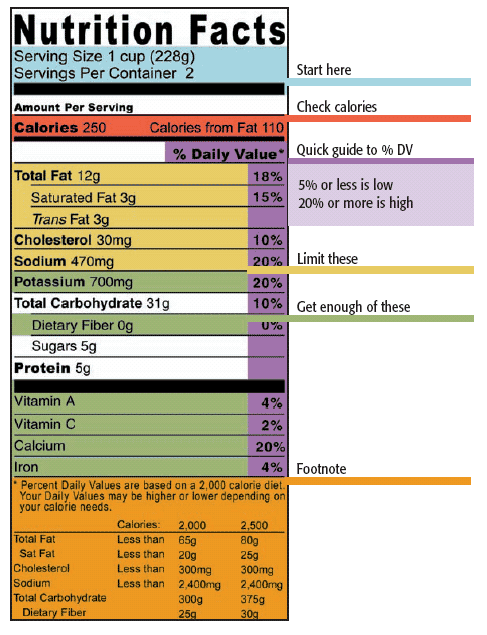

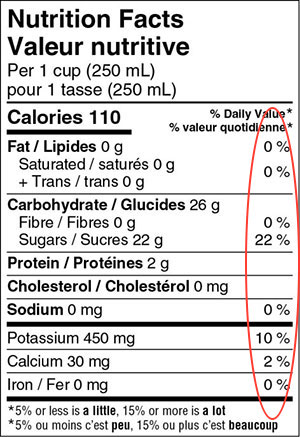
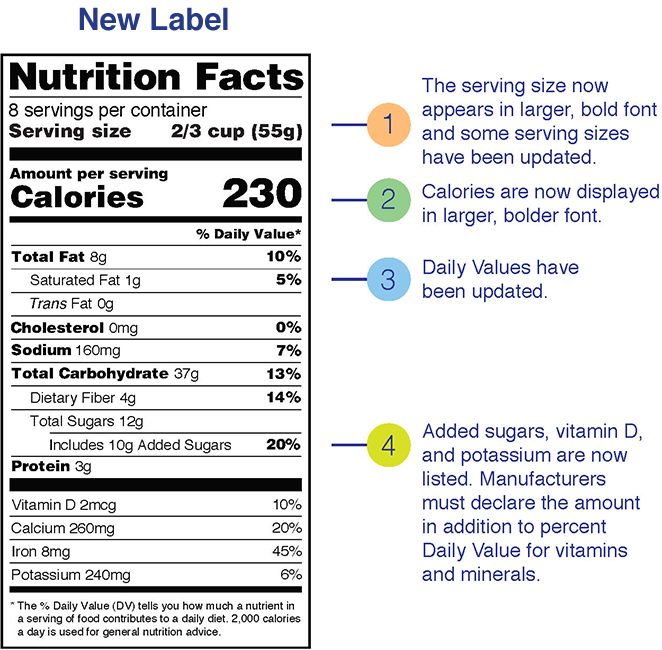
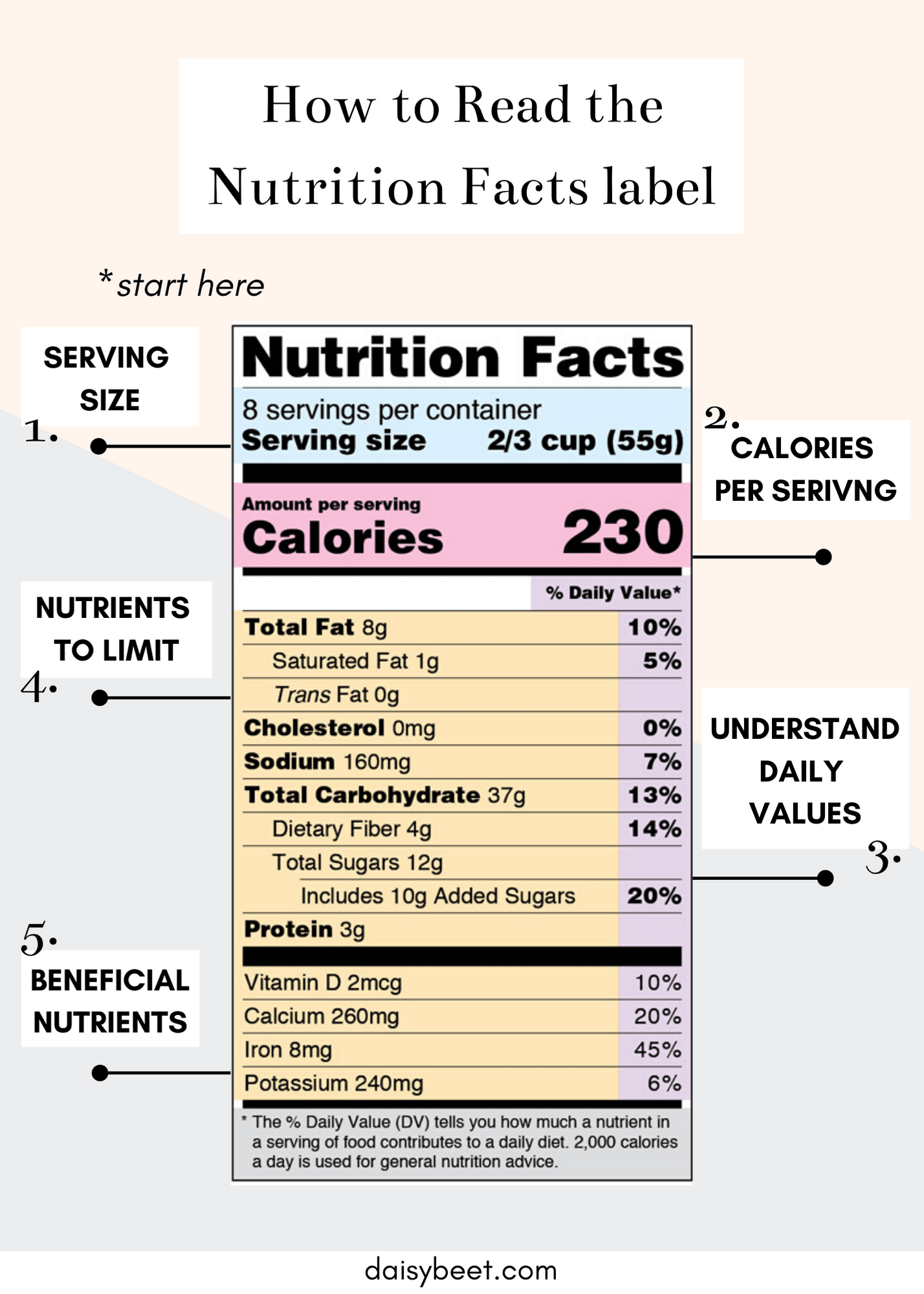
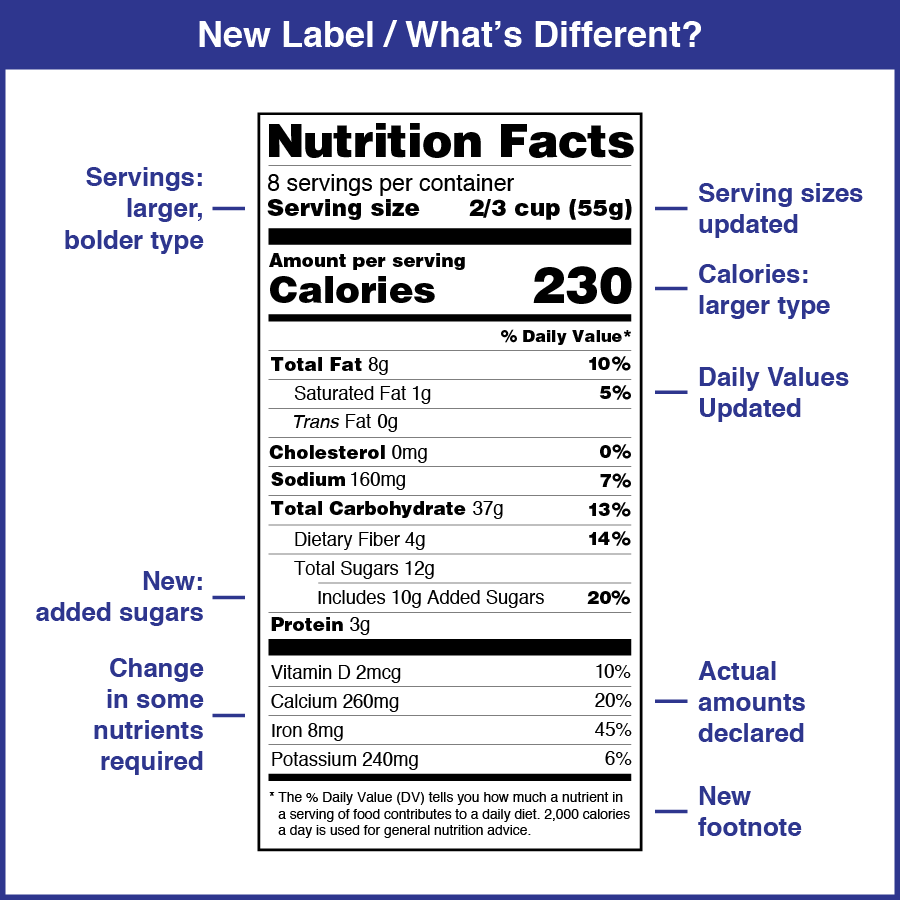


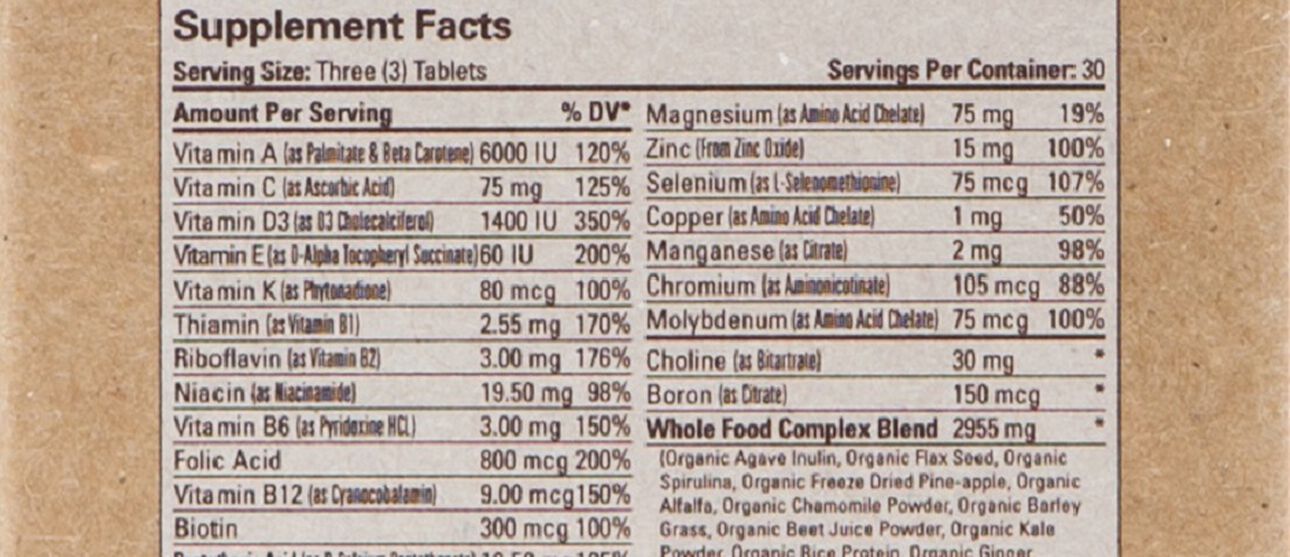

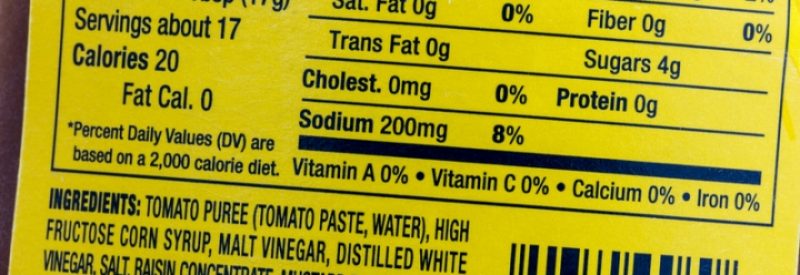

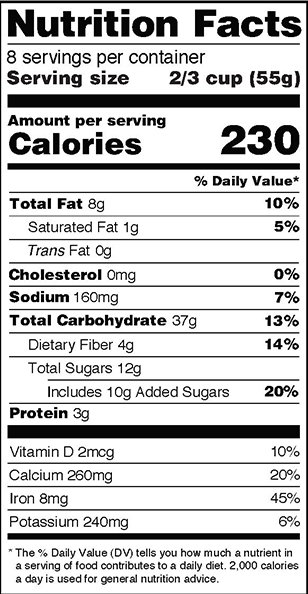
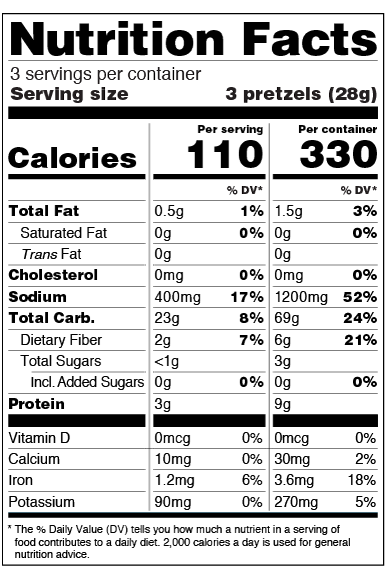

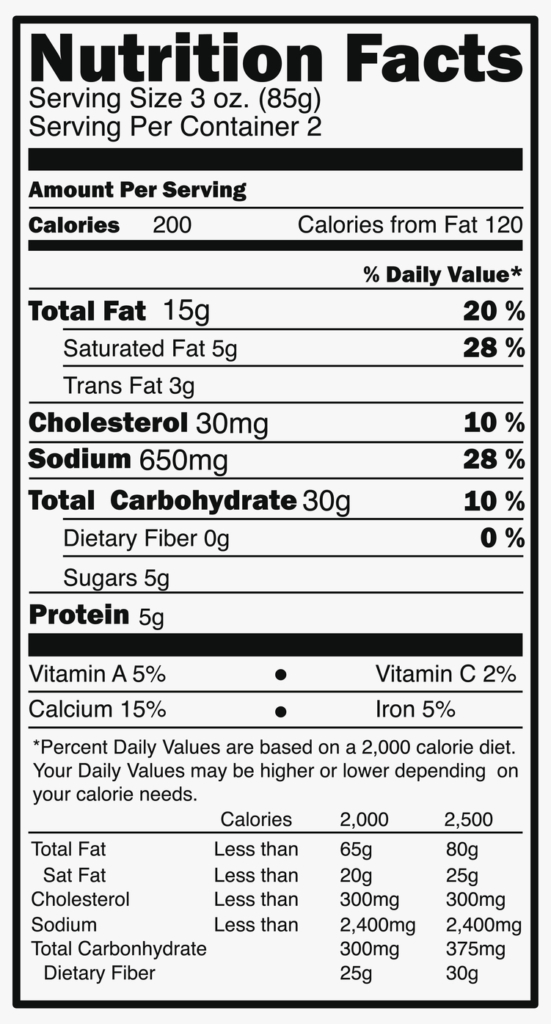
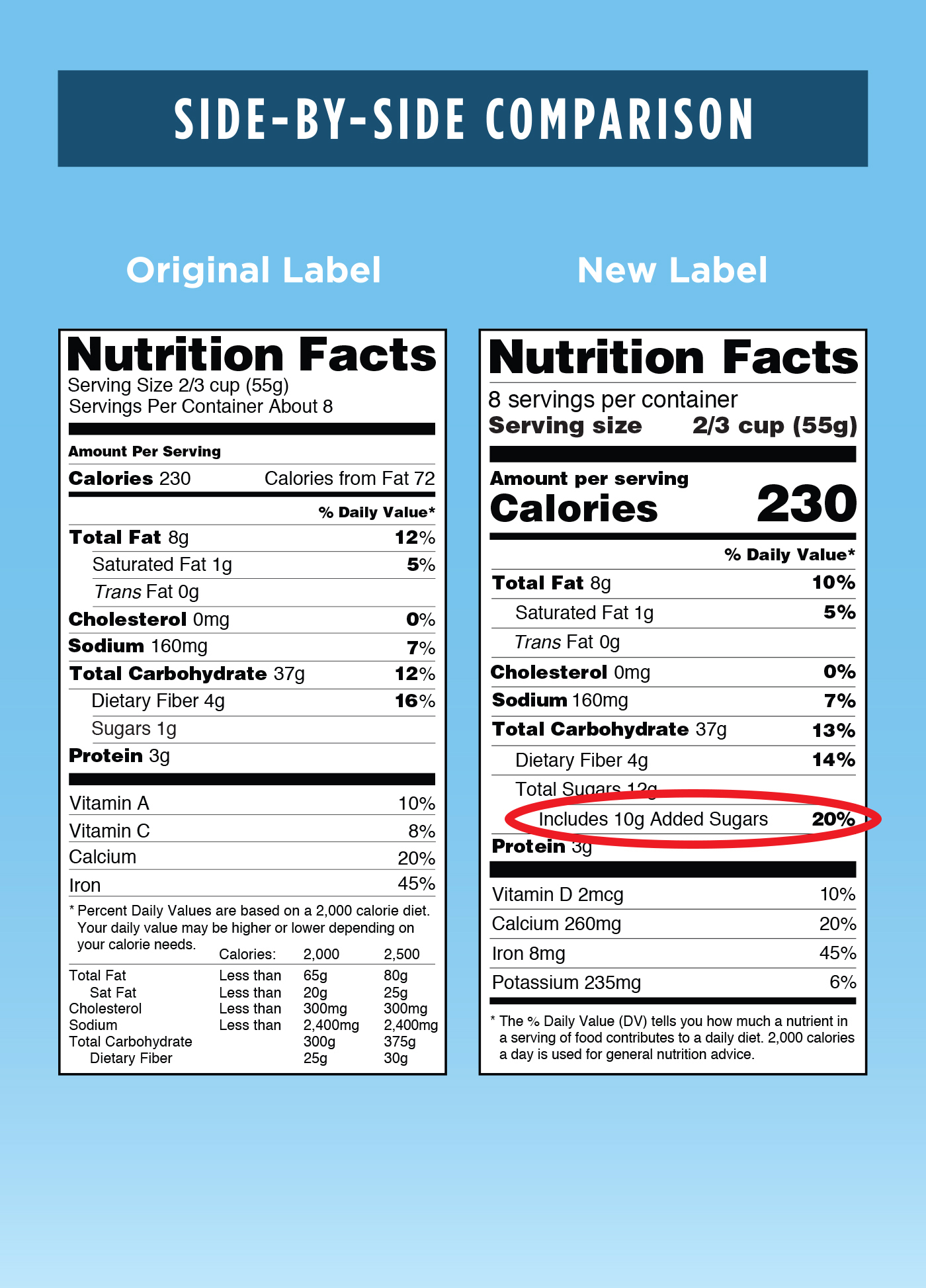
Post a Comment for "41 daily values on food labels"